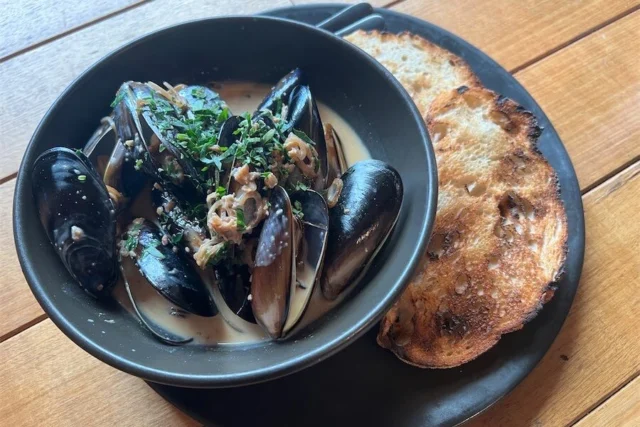
The flowering dogwood is arguably one of the daintiest trees to grow in our climate and it doesn’t mind the cold weather, either, says gardening columnist JACKIE WARBURTON.

THE flowering dogwood (Cornus kousa) can grow up to 10 metres tall and wide where the soil is acidic and moist, and where the soil won’t dry out. Plant camellias and other acid-loving plants around it. Importantly, it needs protection from the hot, afternoon winds.
In early spring its delicate, new, lush foliage appears as well as the small green flowers with bracts or modified leaves that are white and open flat to look like flowers.
Coming into autumn, the foliage is spectacular with crimson reds. As the leaves fall, it can be a real feature plant in the garden.
The fruit that is maturing now is vivid red – and the birds will let you know when they are ripe and ready for picking.
Pruning is only required if there are any broken, crossing over or dead branches and keeping a balanced tree structure.
Fertilise late winter around the dripline of the tree with compost and any organic matter or manures, water in and mulch, and it will be ready for flowering in spring.
The National Arboretum has a forest of Japanese flowering dogwoods that were planted in September, 2009, and this species has edible fruit as well.
The Friends of the Arboretum Harvest Group has made preserves to sell at its harvest stalls in the past, so look out for dogwood jelly or dogwood fruit glaze at your next visit.
The dogwood trees in Forest 8 should be putting on a show with the autumn colours and the beautiful display of white bracts will be worth looking at in spring.
With more than 50 species of dogwoods in the world, there are many that suit our climate. Another showstopper in winter is the Siberian dogwood (Cornus alba).
This species has bright, cherry red, deciduous stems in winter and can be a striking feature in a pot for a winter display.
There’s also the brilliant yellow stems of the yellow-stemmed dogwood (Cornus sericea), a suckering shrub that needs to be contained. But it offers lovely white flowers in spring and produces white, decorative berries as well.
The Himalayan dogwood (Cornus capitata) is an evergreen that grows six metres tall and four metres wide. A large, slow-growing shrub, it has buttery yellow bracts in the spring and large fruit late spring to autumn.
The flowering Cornus florida is also a truly beautiful species that is spectacular when in flower. Its fruits are not edible.

THE winter heliotrope (Petasites pyrenaicus) is a low-growing ground cover for deep shade and a terrific plant for where nothing else will grow.
An ornamental flowering plant, it creates a crowded network of underground roots and doesn’t like root competition from other plants.
En masse under a shaded tree will show this plant off best.
It usually blooms in winter and produces tiny clusters of pink flowers that are said to have the fragrance of cherry pie.
After flowering, the heart-shaped leaves appear and cover the ground quite quickly. In some gardens, if the soil is too moist, it may need to be contained in garden beds to prevent spreading.
Nonetheless, it’s an interesting plant to grow in dark shade with interesting foliage.
Jottings…
- Spray all stone and cherry trees with copper oxychloride and white oil.
- Buy autumn-coloured trees now to see their best colours.
- The next month is a good time to plant or move camellias and evergreen shrubs.
Who can be trusted?
In a world of spin and confusion, there’s never been a more important time to support independent journalism in Canberra.
If you trust our work online and want to enforce the power of independent voices, I invite you to make a small contribution.
Every dollar of support is invested back into our journalism to help keep citynews.com.au strong and free.
Thank you,
Ian Meikle, editor









Leave a Reply